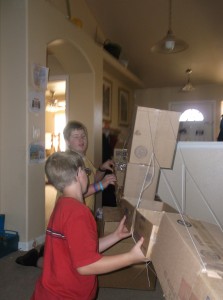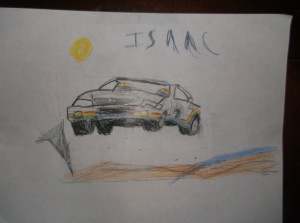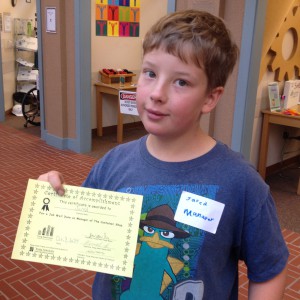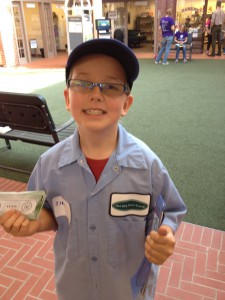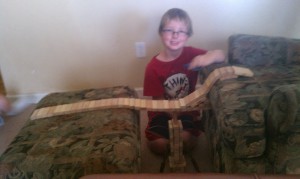One of the questions I get quite often is, “Do kids really learn just by playing?”
The other day, we obtained some boxes. My 9 year old son found some string and tape. Before I knew it, he built a bridge from one side of the banister to the other. It kept falling, so he looked for more ways to stabilize it. His 14 year old brother saw the project and decided to offer suggestions. Soon, they were working together and built a suspension bridge. While building the bridge, There are a lot of what if, how, and why questions. “Why isn’t this working?” “What if I did ____, would it work better?” Kids also learn to risk making mistakes or getting it right. When my sons were working on the bridge, they had to ask why the bridge was falling apart and what they could do to make it stay together. The bridge went from having tape holding it up, to using string to support it from underneath. They were still having problems, so they found other ways to support it.
This wasn’t an assignment, this was him seeing the potential of what he could create with boxes. It excited him. Building the bridge led him to search for books in our home about bridges.
Another day, during school time, my kids rediscovered a book about drawing. They decided to start drawing race cars, painting giraffes and Angry Birds. The pictures gradually got better as the kids created more pictures. Naturally, they gave each other feedback and encouragement. This helped them to improve. Again, the art projects weren’t assigned. When my kids choose to do projects like these on their own, rather than being assigned, they enjoy the process because there are no deadlines, requirements, etc set by adults. Any limits are set by the kids themselves.
Not too long ago, two of my sons had the opportunity to visit Young America in Denver. There, they spent the day pretending they were running various companies in Ameritowne. There was sales forecasting, buying and selling, price setting based on supply and demand, and more. My sons enjoyed this experience and want to go back for other activities offered there.
How to Help Kids Enjoy Play
The best ways that I can find is to set limits on activities that prevent playtime. Limit scheduled activities and time using electronics such as TV, mobile devices, and video games. These are some of the biggest blocks in our modern day society. Kids go to school and/or lots of extracurricular activities that are supposed to enrich their minds. Afterward, they are so tired that they have very little energy left for play. Having too much structure prevents kids from thinking outside the box. Families should aim to have at least 3-4 hours of unstructured time each day without TV and other electronics..
At first, kids and parents might find this amount of time painful because adults are so used to telling kids what they’re supposed to be doing and thinking. Kids are so used to having someone think for them, giving them instructions, and more.
Set the stage by placing a few board games, toys, crafting supplies, etc around. When we first started doing this, my kids complained they were bored. It wasn’t long before Lincoln logs were being used to build fortresses, painting and other crafts, and board games were played. When I have an errand to run, these are some of the activities they choose now instead of electronics.
Allow them to use the tools you give them in ways other than what they are intended. I found myself buying Jenga blocks in multiples because my kids were building extensive and detailed projects.





